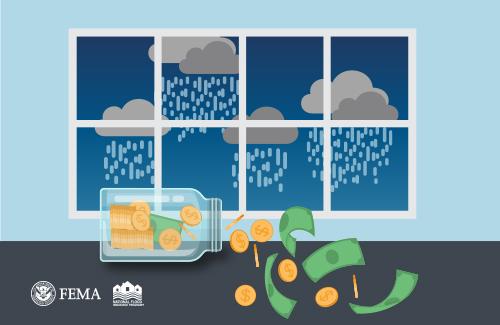Flood insurance is a good deal. Paying policy premiums today to cover flood-related property losses tomorrow is a sound strategy, yet some property owners don’t see it that way.
Understanding property owners’ reasons for not buying flood insurance is a key to helping insurance agents engage with them. We’ve gathered a list of beliefs your clients may hold, so you can best address their needs in an effort to help them protect the lives they’ve built.
“Don’t buy insurance. Save for a rainy day.”
The logic is simple enough! Instead of paying flood insurance premiums, sock the cash away in a rainy-day fund, and when a flood happens, use the funds to recoup flood-related damages.While the “rainy day” approach is appealing, it’s just not practical. “Rainy day” only works under ideal circumstances: regularly saving and investing funds, not experiencing a flood until there are sufficient saved funds to cover losses and not experiencing a catastrophic flood that would exceed saved funds.
Flood insurance provides guaranteed coverage. Property owners set it and forget it. With flood insurance, you’re always covered.“The odds of flooding are too low to justify buying insurance.”
Many property owners believe that “it won’t happen to me.” They think they’re immune, even though numerous factors influence the likelihood of flooding.
You can explain the concept of flood risk and how it’s calculated to property owners. The goal is to move these property owners toward thinking about flood insurance in a more rational way—helping them understand that no one is exempt from flood risk.- “There’s no guarantee that government-run insurance will be there when I need it.”
The NFIP is no stranger to people’s skepticism toward government programs. Many of these consumers may view the world through jaundiced eyes, questioning everything. Their worries are that when a flood happens, the benefits promised by their flood insurance policies won’t be there.
Insurance exists to provide a cushion against the unpredictability of life, including flooding. The flood insurance program, created by the federal government in 1968, has been in continuous operation for decades, and continues to be a robust program that pays out its claims. Getting flood insurance isn’t a gamble; it’s a safe bet.
“If it floods, we’ll be fine.”
These clients wear rose-colored glasses. They’re minimizers, downplaying their own flood risk and the severity of flood-related property damage.
While we appreciate their optimism, it’s actually a troublesome form of denial. Getting through to these consumers means meeting them where they are—and understanding how they think. Anticipate the flawed rationales property owners have for not protecting their investments.Regardless of how your clients initially respond to flood insurance, they’re already on their way to protecting the lives they’ve built. Help them understand that flood insurance is an effective way to manage risk and recoup losses from flood-related damages.

